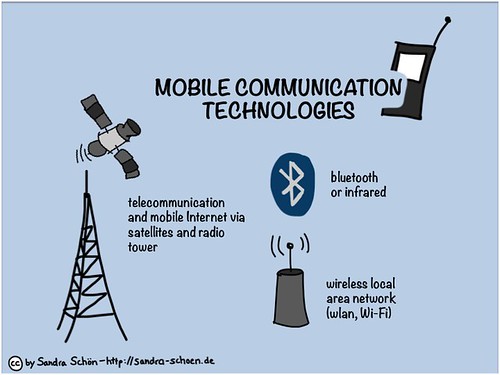
Distance education and distance learning, once undertaken by one-to-one correspondence between learners and teachers (yes I did this!) has been radically transformed into online learning, or e-learning, through the use of learning management systems and other web based or digital tools. Now this type of education is characterized not so much by ‘distance’ as by the mode of ‘electronic’ or ‘e’ learning environments that is internet or web-based, and provides ongoing challenges for the researcher investigating professional contribution (i.e. teaching or educating) in higher education.
Distance education has evolved through many technologies, in tandem with the affordances these technologies provided, and each mode or ‘generation’ has required that distance educators and students be skilled and informed to select the best mix(es) of both pedagogy and technology. Internet connectivity is ubiquitous and now makes communication from multiple locations easy, and puts a vast range of online resources in the hands of individuals, who can stay aware of other’s activities through Twitter feeds and social networking site information or stay connected and update data (including status information) to central sites for others to view and use (Haythornthwaite & Andrews, 2011. p. 20).
In practical terms when communication online becomes more relational, socialized and expressive, individuals are required to master an emergent, articulated repertoire of communicative competencies that mixes interpersonal and group process fluencies to make linkages and correspondences through a repertoire of competencies inextricably social and technological (Lievrouw, 2012, p. 626). In this way new communities of inquiry are formed around shared interest, activity and educational experiences (Garrison et al. 1999; Shea & Bidjerano, 2010), facilitated by the web as a platform for content creation and collaboration by multiple recipients (Franklin et al, 2007).
Whichever way we look at it, working with technology is now an integral component of academic life, content information and connectivity, providing essential components of access to scholarly resources, digital content, communication platforms, and new social, legal and technical frameworks of practice – leading to new forms of scholarship and learning (Borgman, 2007 p.3 ). Academics (as teachers) need to support and nurture learners to learn within connected and collaborative learning environments, to lead purposeful and corrective discourse in relation to multiple information environments as part of the construction of meaning and understanding (Garrison, 2015).
According to Nagy (2011) creating the right blend of resources and methods for an engaging learning environment requires particular and diverse skills, and skills take time to develop and need refreshing as technologies (and student expectations) evolve, though there is an unresolved presumption that academics should contribute to the generation of new knowledge so that teaching is informed by discipline practice. Nagy (2011) concludes that the increasing application of web-based technologies and flexible learning tools associated with academic programs is associated with growing numbers of university staff able to make substantial contributions to scholarship in teaching and learning.
However, different academic communities engage differently in scholarship. Also the proliferation of digital content is part of the change in scholarly communication, and the nature of digital scholarship is dependent on emergent practices, processes and procedures of scholarly communication conducted via various digital domains.
Lynch (2014) describes digital scholarship as a shorthand for the entire body of changing scholarly practice, in recognition of the fact that most areas of scholarly work today have been transformed, to a lesser or greater extent, by information technologies, such as: high-performance computing; visualisation technologies; technologies for creating, curating, and sharing large databases and large collections of data; and high performance networking which allows us to share resources across the network and to gain access to geographically dispersed individuals to communicate and collaborate. New techniques and forms of digital engagement will be required, and at the same time, older modes of disciplinary inquiry will be preserved, carried forward, and reconstituted (Thomas & Lorang, 2014).
In short – there is much to think about, much to change, and much to investigate with deep research into the new fields of digital scholarly endeavour. Digital scholarship should underpin the changing focus for e-learning or online learning for (distance) higher education, not just be driven by the affordances of online technologies.
Yet while personal and social technologies are also (explicitly or implicitly) increasingly expected to be used for academic work, embracing digital communication and information media, the implications and/or relationship to digital scholarship practices remains disconnected or compartmentalised. I believe that understanding digital scholarship may support new pedagogies to emerge in terms of course content, subject dialogue and conversation, which will require an elaboration of the relationship between scholarly practice and technology from digital and social perspectives. – to perhaps create the lasting (and effective) change and development we are ultimately seeking!
References
Borgman, C. L. (2007). Scholarship in the digital age. MIT press.
Franklin, T., Van Harmelen, M., & others. (2007). Web 2.0 for content for learning and teaching in higher education.
Garrison, D. R., Anderson, T., & Archer, W. (1999). Critical inquiry in a text-based environment: Computer conferencing in higher education. The internet and higher education, 2(2), 87-105.
Garrison, D.R. (2015). Thinking collaboratively: Learning in a community of enquiry. London: Taylor & Francis.
Haythornthwaite, C., & Andrews, R. (2011). E-learning theory and practice. California, Thousand Oaks: Sage Publications.
Lievrouw, L. A. (2012). The next decade in Internet time. Information, Communication & Society, 15(5), 616-638.
Lynch, C., (2014). The ‘digital’ scholarship disconnect. Educause Review, May 19. Retrieved from http://er.educause.edu/articles/2014/5/the-digital-scholarship-disconnect
Nagy, J. (2011). Scholarship in higher education: Building research capabilities through core business. British Journal of Educational Studies, 59(3), 303–321. http://doi.org/10.1080/00071005.2011.599792
Shea, P., & Bidjerano, T. (2010). Learning presence: Towards a theory of self-efficacy, self-regulation, and the development of a communities of inquiry in online and blended learning environments. Computers & Education, 55(4), 1721-1731.
Thomas, W.G. & Lorang, E. (2014). The other end of the scale: rethinking the digital experience in higher education. Educause Review, September 15.
Image: flickr photo shared by sandraschoen under a Creative Commons ( BY ) license





 provides such a fabulous resource, with great stuff for teachers, as well as great resources and games for students. Visit
provides such a fabulous resource, with great stuff for teachers, as well as great resources and games for students. Visit  Looking for some new ideas for tools to support your work? Here are the links to the pages in Jane Hart’s Directory of Learning & Performance Tools, which lists over 1,000 tools in 4 main categories as shown below.
Looking for some new ideas for tools to support your work? Here are the links to the pages in Jane Hart’s Directory of Learning & Performance Tools, which lists over 1,000 tools in 4 main categories as shown below.






